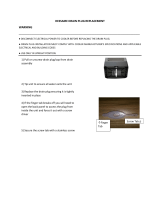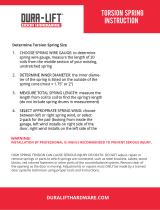
90-816462 2-695
i
Notice
Throughout this publication, “Dangers,” “Warnings”
and “Cautions” are used to alert the mechanic to spe-
cial instructions concerning a particular service or op-
eration that may be hazardous if performed incorrect-
ly or carelessly. Observe them carefully!
These “Safety Alerts” alone cannot eliminate the haz-
ards that they signal. Strict compliance to these spe-
cial instructions when performing the service, plus
“common sense” operation, are major accident pre-
vention measures.
!
DANGER
DANGER - Immediate hazards which will result in
severe personal injury or death.
!
WARNING
WARNING - Hazards or unsafe practices which
could result in severe personal injury or death.
!
CAUTION
CAUTION - Hazards or unsafe practices which
could result in minor personal injury or product
or property damage.
Notice to Users of This
Manual
This service manual has been written and published
by the service department of Mercury Marine to aid
our dealers, mechanics and company service per-
sonnel when servicing the products described here-
in.
It is assumed that these personnel are familiar with
the servicing procedures of these products, of like or
similar products manufactured and marketed by
Mercury Marine, and that they have been trained in
the recommended servicing procedures for these
products which include the use of mechanic’s
common hand tools and the special Mercury
Marine or recommended tools from other suppliers.
We could not possibly know of and advise the service
trade of all conceivable procedures by which a ser-
vice might be performed and of the possible hazards
and/or results of each method. We have not under-
taken any such wide evaluation. Therefore, anyone
who uses a service procedure and/or tool, which is
not recommended by the manufacturer, first
must completely satisfy himself that neither his nor
the product’s safety will be endangered by the ser-
vice procedure selected.
All information, illustrations and specifications con-
tained in this manual are based on the latest product
information available at time of publication.
It should be kept in mind, while working on the prod-
uct, that the electrical system and ignition system are
capable of violent and damaging short circuits or se-
vere electrical shocks. When performing any work
where electrical terminals could possibly be
grounded or touched by the mechanic, the battery
cables should be disconnected at the battery.
Any time the intake or exhaust openings are exposed
during service they should be covered to protect
against accidental entrance of foreign material which
could enter the cylinders and cause extensive inter-
nal damage when the engine is started.
It is important to note that, during any mainte-
nance procedure, replacement fasteners must have
the same measurements and strength as those re-
moved, whether metric or customary. Numbers on
the heads of the metric bolts and on surfaces of met-
ric nuts indicate their strength. Customary bolts use
radial lines for this purpose, while most custom-
ary nuts do not have strength markings. Mismatched
or incorrect fasteners can result in damage or mal-
function, or possible personal injury. Therefore, fas-
teners removed should be saved for re-use in the
same locations whenever possible. Where the fas-
teners are not satisfactory for re-use, care should be
taken to select a replacement that meets the
same specifications as the original.





















